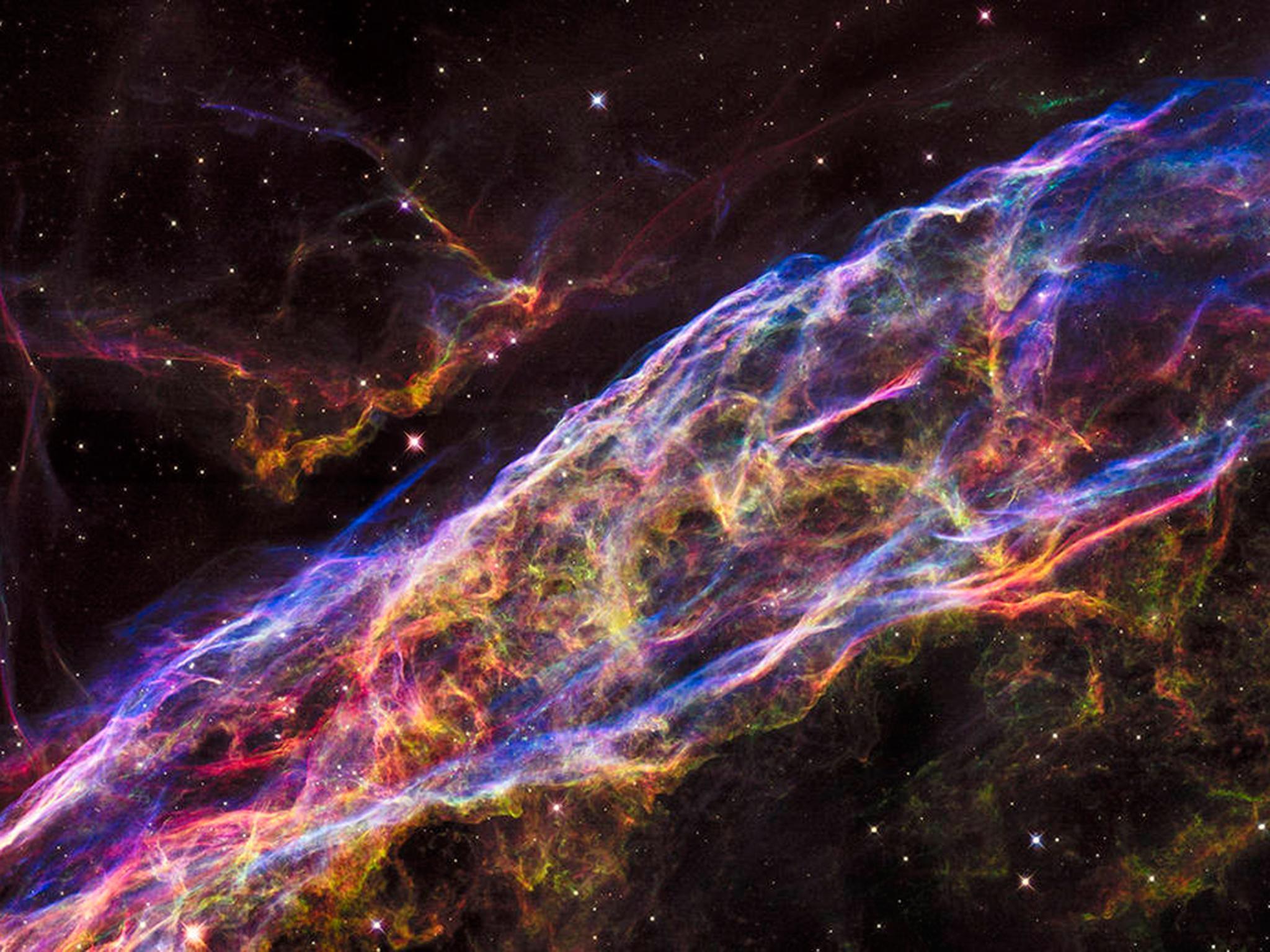Giant 'alien megastructure': That bizarre-looking star just got a lot weirder
What makes this star, KIC8462852, so bizarre is the drastic changes in light we see from it over time

Your support helps us to tell the story
From reproductive rights to climate change to Big Tech, The Independent is on the ground when the story is developing. Whether it's investigating the financials of Elon Musk's pro-Trump PAC or producing our latest documentary, 'The A Word', which shines a light on the American women fighting for reproductive rights, we know how important it is to parse out the facts from the messaging.
At such a critical moment in US history, we need reporters on the ground. Your donation allows us to keep sending journalists to speak to both sides of the story.
The Independent is trusted by Americans across the entire political spectrum. And unlike many other quality news outlets, we choose not to lock Americans out of our reporting and analysis with paywalls. We believe quality journalism should be available to everyone, paid for by those who can afford it.
Your support makes all the difference.Three months ago, news broke that a giant “alien megastructure” could exist around a bizarre-looking star 1,500 light-years away.
While the prospect of aliens was first launched by Penn State astronomer Jason Wright, almost everyone in the astronomy community agreed that the chances that this was the case were “very low.”
Now, the latest investigations into this strange star by Louisiana State University astronomer Bradley Schaefer have reignited the alien theory, New Scientist reported.
What makes this star, KIC8462852, so bizarre is the drastic changes in light we see from it over time. Many stars experience temporary fluctuations in brightness, increasing and decreasing in luminosity over time, but KIC8462852's changes are severe by comparison.
Between 2009 and 2013, astronomers using the Kepler space telescope discovered that it would sometimes lose up to 20% of its brightness. What's more, the changes didn't follow any obvious pattern.
That would suggest something gigantic must be blocking the light at random times, meaning that it couldn't be a planet or other regular orbiting object because that would generate a distinct pattern of dimming light. It must be something that changes shape over time, thereby blocking different levels of light at random intervals.
Surprise: It's probably not comets
An alien megastructure, called a Dyson swarm, was suggested as one explanation for what scientists have observed, but the most likely reason astronomers came up with was comets — a giant family of them.
But Shaefer says not so fast.
“The comet-family idea was reasonably put forth as the best of the proposals, even while acknowledging that they all were a poor lot,” Schaefer told New Scientist. “But now we have a refutation of the idea, and indeed, of all published ideas.”
To make his discovery, Schaefer had to dig deep down into the astronomy archives at Harvard. It turns out, astronomers have data on KIC8462852 dating back as far as 1890.
By analyzing over 1,200 measurements of this star's brightness taken from 1890 through 1989, Schaefer found that the irregular dimming of KIC8462852 has been going on for over 100 years. Schaefer published his findings in the online preprint server arXiv.org.
What's more, he explains in his paper that this “century-long dimming trend requires an estimated 648,000 giant comets (each with 200 km diameter) all orchestrated to pass in front of the star within the last century,” which he said is “completely implausible.”
So what is it?
By killing the comet theory, Schaefer has brought us one step closer to finding out what is really happening around KIC8462852.
An artist's concept of gas-giant planets in a dusty solar system, similar to how HD 95068 could look.
At the same time, he's also reignited the possibility that the source could be an alien megastructure that an advanced alien civilization has been slowly building over time. One thing's certain for Schaefer: The bizarre dimmings are probably caused by a single, physical mechanism that's undergoing some type of ongoing change.
“The century-long dimming and the day-long dips are both just extreme ends of a spectrum of timescales for unique dimming events, so by Ockham's Razor, all this is produced by one physical mechanism,” Shaefer said in his paper. “This one mechanism does not appear as any isolated catastrophic event in the last century, but rather must be some ongoing process with continuous effects.”
Schaefer isn't the only one interested in learning more about KIC8462852. Late last year, astronomer Doug Vakoch and his team at the new organization called SETI (Search for Extraterrestrial Intelligence) International — not to be confused with the SETI Institute — went hunting for aliens around KIC8462852.
They searched for signals that an alien civilization might be beaming toward Earth either in radio or visible wavelengths, but ultimately they came up empty handed. So, if it is aliens, then they're being awfully quiet.
Read more:
• EY says there is a massive 'void' in fintech: 'Is anyone actually using this stuff?'
• Here is all the money leaving China right now
• The Bank of England has banned and fined 2 former Co-operative Bank execs
Read the original article on Business Insider UK. © 2015. Follow Business Insider UK on Twitter.
Join our commenting forum
Join thought-provoking conversations, follow other Independent readers and see their replies
Comments